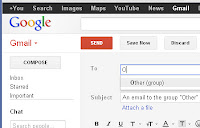Maybe it's just me, but I enjoy reading a book that isn't currently in the
New York Times Top 20. Of course, there are a lot of "dogs" out there (no offense to man's best friend), but sometimes you get a tip on a new book that's one of those proverbial "best-kept secrets," and following up can offer both a good read and a reason to hold your head a little higher while you're standing in line at Starbucks.

One such sleeper is "Shaken Allegiances," by Michel Bruneau. Published in October 2009, the novel covers the 48 hours immediately following a fictional devastating earthquake that hits Montréal Island in the middle of an icy Canadian winter. The tale unfolds through the rotating perspectives of a dozen major characters, each dealing with a different aspect of the quake's devastation.
Frankly, it's one of those books that I didn't want to like, but as soon as I got a few pages into it, I was hooked. (Another in this category is "Bel Canto," by Ann Patchett, but I digress.)
Of the two principal things I learned from this book, one came as quite a surprise: The depth of the divide felt by the men and women of Québec - the Québécois and Québécoise - with regard to the rest of Canada. I knew there was a lingering separatist undercurrent, but I had no idea how strongly people on both sides feel about the issue. Through the characters in his novel, Bruneau provides insightful background into both the historical roots and the present-day reality of this schism.
The other take away was less surprising but more chilling - no pun intended. Through the narrative interwoven with the words, thoughts and actions of the main characters, the author leads the reader to a sobering reflection on the hardships inhabitants might face under the combination of winter weather and a major earthquake. Without dwelling on the physical plight or suffering of any individual, he nonetheless clearly illustrates the bleak situation in the aftermath of such a calamity. For example, who would think that the tunnels for the inoperative subway - after all, the electrical distribution system has been rendered completely nonfunctional - would provide the best shelter for the island city's suddenly homeless citizenry? Or that army troops bearing relief supplies would have to camp on the mainland side of the river (in a combination of a blizzard and seriously frigid temperatures), stymied by a total lack of passable bridges onto the island? These are the likely realities of which Bruneau paints a vivid picture.
One of the beauties of this book, which was a 2010 regional award winner, is that you probably won't find it in your local library. The others in your book club have probably never heard of it, which makes it all the more delightful, yet "Shaken Allegiances" is available - just visit Amazon.com.
A native of Québec City, structural engineer and author Bruneau has for years lived and taught in Buffalo, N.Y., "enjoying its comparatively balmy winters," he notes on the back cover. Despite one minor bump in the linguistic road from Québec to Buffalo (remember the "lie, lay, lain" verb forms?) - actually in this case more of a charm than a detriment - this novel is a good read. And in the end, the author's mission is accomplished. He has made us think.
Learn more about Michel Bruneau the author in "The Engineer as Writer," from the February 2012 issue of Modern Steel Construction.



